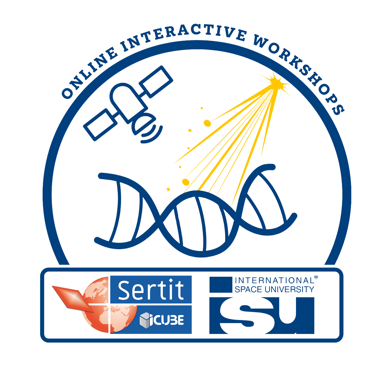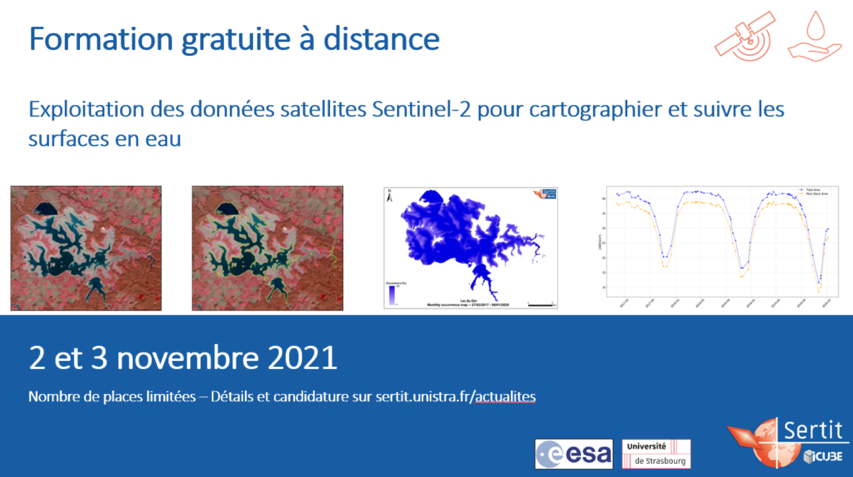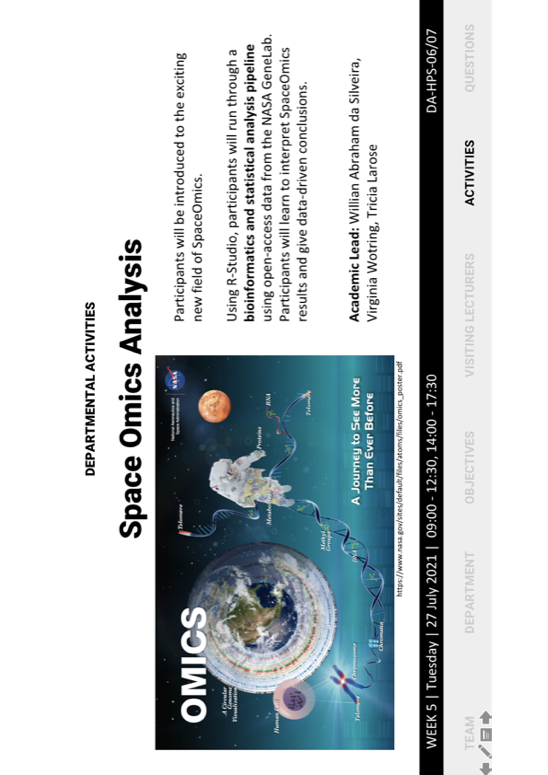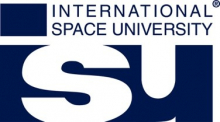
Objectives of the service

During the COVID-19 pandemic, universities and training centres moved their activities online and most hands-on workshops got cancelled. This situation is not sustainable, as students need to get experimental teaching and practical training to benefit from the formal lectures they are still able to attend. In addition, online teaching can be extremely valuable for many students who cannot go to campus, whether for health reasons, professional constraints, because of visa issues or because they live in remote areas.
We create example workshops based on real-life problems and up-to-date materials, that improve the student experience and provide them with interactions closer to what they would enjoy during an on-site workshop.
Three disciplines were selected: Life Sciences, through a workshop on genomics data analysis; Earth Observations with two workshops, on Environmental studies and Disaster Management; and astronomy, with an introduction to the Virtual Observatory tools.
Users and their needs
The community of students and young professionals covers a variety of users :
-
Students prevented to attend on-site classes because of sanitary measures;
-
Professionals with full-time job;
-
Participants with health issues or health and legal difficulties to travel;
-
Participants leaving in remote areas and unable to commute to the university or training centre.
All countries are concerned.
Similarly it may be the instructor who is not in capacity to meet the students. The reduction of the greenhouse-gas footprint of universities and training centres may also prevent on-site delivery of single workshops.
These participants will require the same level of interactivity as on-site participants in order to learn by doing. They equally need to bound with their fellow classmates to develop their network, acquire team work skills. They need a strong level of connection with the instructor to receive feedback and progress through the workshop activities.
However, it is notoriously difficult to replicate through videoconference tools the interactivity and supervision that naturally occurs during on-site workshops. Non-verbal communication is suppressed and the instructor cannot easily perceive and address the participants’ difficulties.
Service/ system concept
The workshops can be proposed on a variety of videoconference platforms. In some cases, low-bandwidth options like WhatsApp can improve the communications while large documents (slides and data) are shared in advance, when the network was better or over a longer period of time.
The participants use professional, up-to-date analysis software and datasets, similar to what researchers or companies use. They follow the steps of data download, reduction and/or analysis that current applications follow.
Like the platform of delivery, the format can be adapted to the audience. Depending on the participants’ legal and practical constraints, more time can be spent in synchronous or a synchronous mode.
The workshops start with an introduction to the topic and tools that last ~20% of the total workshop time. After that the participants work individually or in pairs and process the various steps of the workshop, requesting the help of the instructor or exchanging with the other participants, using the platform itself (e.g. Zoom) or other communication tools (e.g. in a WhatsApp group). They work for a few hours, possibly with a break for asynchronous work. The workshop is concluded with a joint session with all participants and instructor(s) to summarize the activities and review the workshop learning outcomes.
Space Added Value
Space assets are used in this project in two ways :
-
some data transfer prior to or during the workshop can take place using satellite communication;
-
the participants reduced and analysed space-based datasets. The astronomy workshop involved data taken by the ESA Gaia mission located on that L2 Lagrange point. The Environment and Disaster workshops used ESA Sentinel data. Finally the Life Sciences OMICS workshop considers astronaut OMICS data, describing the health status of the astronauts and the effects of medication when taken in orbit.
Current Status


Four workshops have been developed. The teaching material is prepared and the datasets to be processed by the participants are identified. The workshops have been delivered to a diversity of audiences, which allowed us to identified and address various issues, from marketing to bandwidth limitations.
Specifically, four workshops have been delivered to academic and professional development programs, to a national audience (Burkina Faso, by an instructor located in France; Norway, by three instructors located in Norway, France, and the UK). Another workshop has been delivered to a diverse audience of participants answering an online, public call. The ten participants included university students, civil servants of local authorities, and young professionals. Finally, one workshop was delivered to the employees of a space science and technology institute in Ethiopia, from France.
The project explored the user requirements for online, interactive hands-on workshops by very different audiences. The most relevant platforms and formats to satisfy those requirements were determined.
It was concluded that while participants still prefer on-site meetings, other things being equal, the online experience may come sufficiently close to offset limitations of on-site meetings, such as travel restrictions and their financial, time, and environmental costs.




